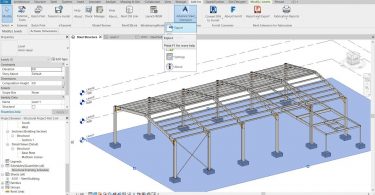

You should be comfortable with the fundamentals of the Autodesk Revit software, as found in the Autodesk Revit 2019 Architecture Fundamentals, Autodesk Revit 2019 Structure Fundamentals, or Autodesk Revit 2019 MEP Fundamentals guides.The practices and files included with this guide might not be compatible with prior versions. Access to the 2019 version of the software.This guide also contains discipline-specific practices for families, including: doors, windows, railings, pipe fittings, light fixtures, gusset plates, and built-up columns. Create specific families, including in-place families, profiles, annotations, and parameters.Modify the visibility of components and incorporate additional family items such as controls, MEP connectors, and nested components.Set up a component family file with a parametric framework.Create custom wall, roof, and floor types as well as MEP system families.


Create custom templates with annotation styles, title blocks, and custom element types.This guide contains practices that are specific to each discipline. The objective of the Autodesk® Revit® 2019 BIM Management: Template and Family Creation guide is to enable users who have worked with the software to expand their knowledge in setting up office standards with templates that include annotation styles, preset views, sheets, and schedules, as well as creating custom system, in-place, and component families. Having this in place makes the process of any new project flow smoothly and efficiently. A key component in managing the BIM process is to establish a company foundation for different types of projects by creating standard templates and custom family elements. Autodesk® Revit® for Architecture, MEP, and Structure is a powerful BIM application that supports the ability to coordinate, update, and share design data with team members throughout the design construction and management phases of a building’s life.

Building Information Modeling (BIM) is an approach to the entire building lifecycle.


 0 kommentar(er)
0 kommentar(er)
